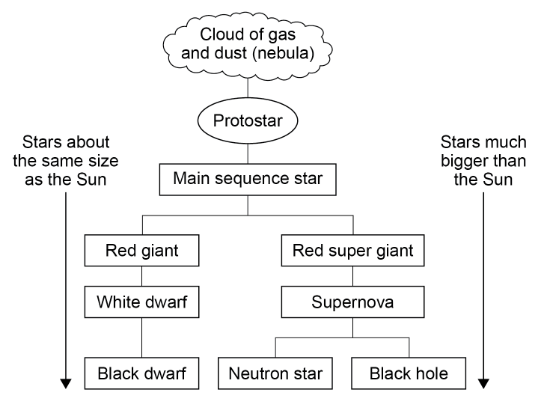#8.1.1
Our solar system
Within our solar system there is one star, the Sun, plus the eight planets and the dwarf planets that orbit around the Sun. Natural satellites, the moons that orbit planets, are also part of the solar system.
Our solar system is a small part of the Milky Way galaxy.
The Sun was formed from a cloud of dust and gas (nebula) pulled together by gravitational attraction.
Students should be able to explain:
- how, at the start of a star's life cycle, the dust and gas drawn together by gravity causes fusion reactions
- that fusion reactions lead to an equilibrium between the gravitational collapse of a star and the expansion of a star due to fusion energy.
#8.1.2
The life cycle of a star
A star goes through a life cycle. The life cycle is determined by the size of the star.
Students should be able to describe the life cycle of a star:
- the size of the Sun
- much more massive than the Sun.

Fusion processes in stars produce all of the naturally occurring elements. Elements heavier than iron are produced in a supernova.
The explosion of a massive star (supernova) distributes the elements throughout the universe.
Students should be able to explain how fusion processes lead to the formation of new elements.
#8.1.3
Orbital motion, natural and artificial satellites
Gravity provides the force that allows planets and satellites (both natural and artificial) to maintain their circular orbits.
Students should be able to describe the similarities and distinctions between the planets, their moons, and artificial satellites.
Students should be able to explain qualitatively how:
- for circular orbits, the force of gravity can lead to changing velocity but unchanged speed
- for a stable orbit, the radius must change if the speed changes.